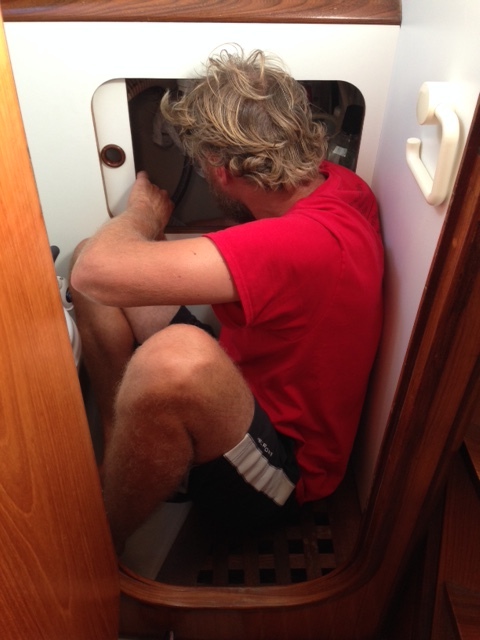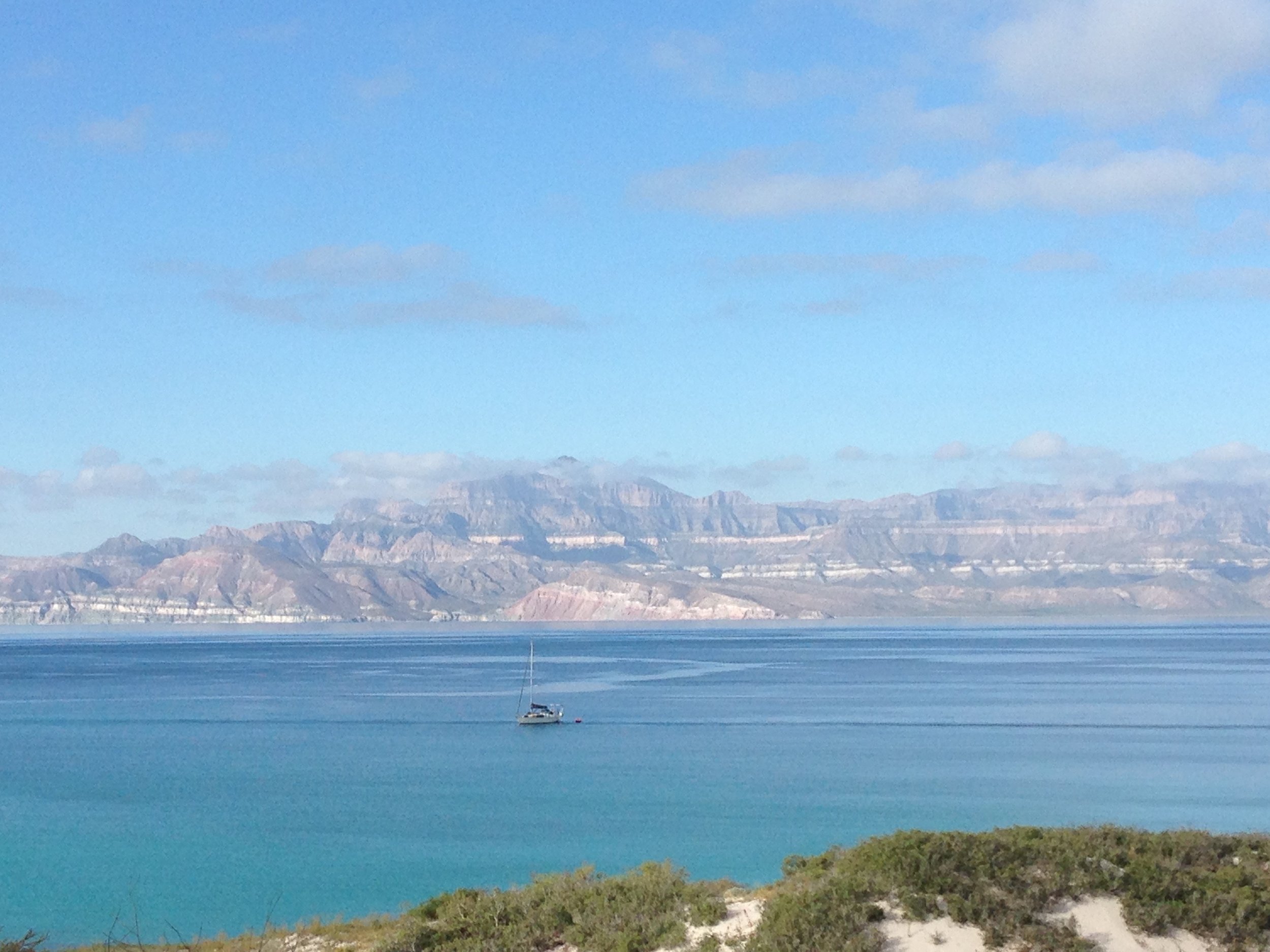Cruising Life. Is it paradise or just a lot of work? Or maybe a bit of both...
As we were planning to cruise in our sailboat to warmer waters, we would picture us chilling on a boat with the sun and beach off the front. That was our motivational pull. Our friends, who were excited for us, would picture soft sandy beaches, clear aquamarine water, sunshine and relaxing on the boat as we bobbed in the water. Paradise.
We learned to sail by racing with friends in the Puget Sound. We knew how wet, cold, tiring and exhausting sailing can be. We also knew how peaceful, fulfilling and happy it made us. So, we had an idea of what our new lifestyle would bring. There would be dreamy moments mixed in with gritty work done in the more camping/roughing it lifestyle of cruising on a budget. Here is a peek into the full scoop of cruising life for us. Reality.
Baby Turtle ready for the trek to the ocean
Paradise Side
Life is slowed down to the pace of the turtle; or the weather.
We get to take time to smell the roses and notice all the grains of sand. It helps me appreciate time and space, and the details that were missed when rushing back in our city life. One of our favorites in this area is having slow mornings.
We eat fresh fish for dinner, when we catch one.
It involves a bit of sweat equity but harvesting one’s own food feels great! Looking forward to the fresh coconuts of the S. Pacific.
Jason wrestled this durado for 30 minutes!
Being able to choose a desolate place or a city/town.
There is normally a quiet cove and empty beach when you want a peaceful environment. There is also the option of a city when needed for provisions and other basic items, along with wifi and the cruising boat social scene.
Creating our own schedule & locations; with the weather making its influence too.
Do we join another boat to travel together for a bit? Or do we move anchorages due to an uncomfortable swell? Or maybe some cruisers suggest a place that has great activities, so we change our route or plans. We are always flexible on where we want to go next. Our friend Alan on SV Gobblin summed it up nicely by saying something to the extent of 'I don't have to be anywhere in the next two years.'
More time with family.
When Aksel was born, Jason and I were both working full time. We entered a nanny-share on weekdays and only saw our son for 3 hours a day. After a few months of that, we decided we really wanted to be a bigger part of raising our son. That was one of the huge decisions for making this move into cruising. Now we are together 24 hours a day - for better or worse. I think it is for the better!
The Reality Side
With a slower pace, everything takes twice as long as it use to, or more, especially daily chores and boat work.
Laundry: Back home it might take 10 minutes to load the washer, go do something for a while, then 10 minutes to switch the laundry & 15 minutes to fold. Now we can easily spend half a day doing laundry - take our dinghy to the dock, walk with our laundry bag to a laundry mat, wait there 1.5 hours, and walk back to the dinghy. It usually takes a minimum 2.5 hours. Soon, we will start doing laundry on the boat and we will see how long it takes!
Grocery Shopping: Back home it would be maybe 30-45 minutes, including the car ride. But now we, again, are walking to the store and backpacking the food back. Sometimes it takes half the day. Sometimes we walk there and then Uber/Taxi if we are doing a big provisioning run.
Boat Projects: Even the little things seem to take twice as long. Usually, there is some disassembling of space (moving stuff out of the way). Getting all the parts. Sometimes we have to go to a few different stores to find the right pieces, which can take a few hours itself. Then actually doing the work and putting everything back together.
Traveling via Sailboat:
A lot of times you can drive a car for an hour on the highway to reach the next location on a trip. For us, the same distance on the sailboat takes about 10 hours, with a good wind pushing us. When we doing overnight passages we have the night watches. We take 3 hour shifts through the night to watch for other boats and different obstacles.
Wet/Salty everywhere.
Of course, it is normally more humid on the water, so things tend to be damper; bedding, clothing, skin, food, etc. The nice thing about sailing in a desert area like Baja Mexico is that it is generally drier. Also, salt water takes a lot longer to dry. And sometimes it would get cold and clammy, though I think we left that behind in California. Though at times I do feel like my feet really are duck feet and they will never fully dry.
Cruisers Midnight, we rise and sleep with the sun.
We are pretty tired by the end of the day. Being out in nature, swimming, hiking or just sailing takes a lot of our energy. Then there is making meals, washing dishes, doing chores. Plus the mental part of always checking if we have enough water, fuel, charged batteries, etc. It isn’t too odd when we go to bed at 8.30pm, though we are up by 6.30 am each morning too. With it getting dark by 5.30pm, 8 pm is the cruisers midnight!
Camping/Self Sustaining Lifestyle.
We live a more roughing it lifestyle than back home. Sometimes we don't have a freshwater shower for weeks. Our showers are bathing & swimming in the salty ocean sweetness. We are wearing our clothes for multiple days in a row, and no one expects us to be clean. A large part of our lifestyle is being resourceful and aware of our consumption of water, power, food, etc.
Cruising for us is paradise, wrapped up in the down and dirty work of maintaining a boat, minimal living, and traveling in 3rd world countries. I think it is a great balance of life and I enjoy the honest hard work since I get to also play hard and spend all my time with family on my own schedule in foreign countries. Not to mention the cruiser community is pretty awesome, but that is a topic for another article.




















